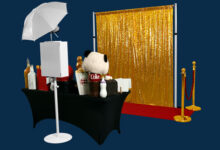
8 Product Design Fundamentals You Need to Know
In a marketplace where 96% of currently existing companies will fail in the next ten years, product design is more important than ever. In fact, great product design can be the key differentiator that helps your business succeed where others fail.
But what exactly does product design entail? That’s what this blog post is all about. Read on for eight top product design fundamentals that will help you stay ahead of the competition.
Table of Contents
1. Understand Your Target Market
Product design is all about creating products that meet the needs and wants of your target market. If you don’t understand your target market, then you can’t create a product that they will love. That’s why understanding your target market is essential to product design.
Think about it this way: let’s say you’re designing a new phone case. If you don’t know who your target market is, then you might create a case that’s too bulky or too flimsy. But if you take the time to understand your target market, then you can create a case that’s just right for them.
So how do you go about understanding your target market? Well, there are a few things you can do.
First, you can research your target market online. You can also talk to people in your target market and ask them what they want and need from a product like yours. Finally, you can use surveys and questionnaires to get feedback from potential customers.
2. Get It Right With Aesthetics
First impressions matter, and if a potential customer doesn’t like the way your product looks, they’re unlikely to give it a second chance. That’s why it’s so important to create a product that is not only functional but also visually appealing.
Think about some of the most successful products on the market today, from smartphones to cars to fashion accessories. They all have one thing in common: they look good.
In addition to catching the eye, aesthetics also play an important role in conveying a product’s brand identity. A well-designed product can communicate messages about quality, luxury, or affordability, just to name a few.
3. Think About Functionality
A lot of elements go into designing a product, and it can be easy to get caught up in making things look good without thinking about how they actually work. That’s why functionality is such an important aspect of product design — if something doesn’t work well, it’s not going to be used for long, no matter how nice it looks.
When thinking about functionality, it’s important to consider both how the user will interact with the product and what purpose it serves. For example, a coffee mug might be designed with an ergonomic handle that’s easy to grip or with double-walled insulation to keep drinks hot.
Every aspect of the design should be focused on making the product more user-friendly and effective at performing its intended function.
4. Pay Attention to Product Labels
Many products use beautiful product packaging but get it horribly wrong when it comes to product labels. Have you ever been in a store and picked up a product only to put it back down because you couldn’t make heads or tails off the label?
Product labels play a key role in the design process by providing critical information to customers. They help customers to understand what a product is, how to use it, and what they can expect from it. In other words, labels are essential for helping customers to make informed purchasing decisions.
So, what makes a good label? First and foremost, labels should be clear and easy to read. They should also be placed in a prominent location on the product so that they can be easily seen and understood.
Additionally, labels should provide relevant and accurate information about the product. They should be written in plain language and should avoid using technical jargon. Finally, labels should be visually appealing, so don’t skimp on graphic design.
One way to make sure you’re getting it right when it comes to product labels is to invest in top-notch print and apply label applicators.
5. Make Product Testing Part of Product Design
Many people think that product testing is only something that happens after the product has been designed. However, testing should actually be an integral part of the design process.
By testing a product early and often, designers can identify potential problems and make necessary changes. This can save a lot of time and money in the long run, as well as improve the quality of the final product.
There are many different types of tests that can be performed on a product, so it’s important to choose the right ones for each individual product.
6. Design With Manufacturability in Mind
Always design products in a way that makes them easy and efficient to manufacture. There are a few reasons why this is so important.
First of all, if your product is difficult to manufacture, it will likely be more expensive to produce. This can make it difficult to compete with other products on the market.
Additionally, if manufacturing is not efficient, it can lead to delays in getting the product to market. This can be a major problem, especially for businesses that are reliant on timely launches.
Moreover, if a product is difficult to manufacture, it can be more prone to defects and quality issues. This can lead to customer satisfaction problems and damage your brand reputation.
7. Understand That Product Design Is an Iterative Process
Designers usually don’t get it right the first time. They have to keep trying different solutions until they find one that works best. This can be a frustrating process, but it’s also essential for creating successful products.
There are a few reasons why iteration is so important in product design. First of all, it allows designers to test different solutions and see which ones work best. Iteration also helps them to identify and fix problems early on.
And finally, iteration gives designers a chance to improve the product as they go along.
8. Don’t Be Afraid to Fail
Designing products is not easy. There will be times when you make mistakes and end up with a failure. But don’t let this discourage you.
Failure is an essential part of the design process. It’s how we learn and grow as designers. Every time you fail, you’ll come out of it with a new understanding of what works and what doesn’t.
So don’t be afraid to take risks. And when you do fail, pick yourself up and try again.
Get It Right With Your Product Design
Product design is a critical aspect of any product development process. By understanding and following these product design fundamentals, you can ensure that your product is well-designed and successful.
Did you enjoy this article? Keep visiting our blog for more exciting content.








